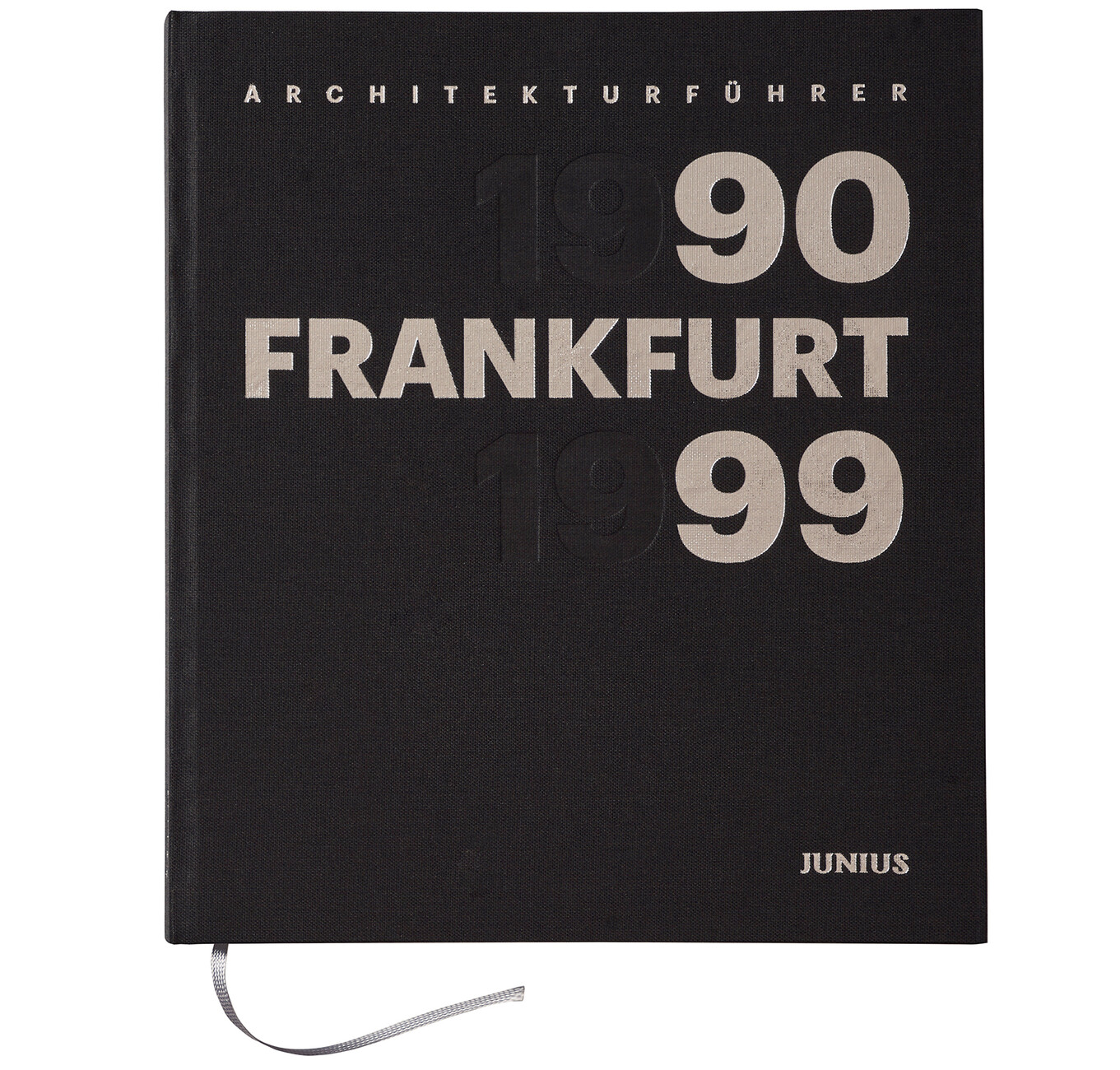Between Städel and Erdkeil
There might be a pandemic going on, but there is one thing you can rely on: “Architekturführer Frankfurt” (Guide to the Architecture of Frankfurt) by Wilhelm Opatz and Freunde Frankfurts e.V. comes out every two years. Working in strict chronological order, each book focuses on one decade, kicking off in 2014 with the 1950s. After the 1960s, 1970s and 1980s, we have now reached the 1990s – to date not a very popular period. Although each volume is bound in cloth and the covers all differ in color, they are still recognizable at first glance as a series. The new one is black with shiny silver letters on the softcover’s cloth binding. Whereas the preceding decades up until Brutalism and Postmodernism have, together with their architectural testimonies, been placed in an architectural and art-historical context and consequently have come to be viewed more positively, there seems to be a certain reluctance to consider the decade that followed the fall of the Berlin Wall. And so it was not until July 2021 that a digital conference initiated by online magazine moderneRegional tentatively asked “Das Ende der Moderne?” (The End of Modernism?), while some buildings from this era only received hesitant praise when mentioned in the architects’ obituaries, as happened when architect Helmut Jahn died in May 2021.
There are two main things that make the architectural guides compiled by Opatz and his associates so wonderful: First, they present architecture as a cultural asset and consequently as built culture – by embedding the building in a broader social context; second, they are radically subjective in doing so. This results in rather unconventional architectural guides that make for pleasant reading by adding another dimension to what tends to be a somewhat traditional genre. It is not only the case that buildings from specific years are sequenced, e.g., in chronological order or according to more or less intentionally set routes through the city. Rather, the books place the architecture in a context. For example, the guide on the 1990s includes relevant items dating from that period; this might be a T-shirt or a report about an intoxicated Techno club night, a sculpture in the public realm, a stool or the photo of a CD recorded in Frankfurt. After all, architecture is part of precisely this world, we see it as a part of its environment from which it cannot be separated – which also goes for our own perception of it.
An outstanding building is assigned to each year, portrayed using surprising images and a concise text. What makes the photos surprising is that long shots are rare. Instead, “Architekturführer Frankfurt 1990–1999” depicts the buildings in subjective detailed images that come closer to conveying the actual view of passersby as against the effect of numerous wide-angle or aerial photographs. These subjective detailed photographs paint an astonishingly consistent picture of the building as a whole and clearly reveal what sets it apart from others and makes it so special. And the book also demonstrates how you can illustrate our built environment when a widespread pandemic makes it impossible to actually visit sites and take photos. Sometimes am empty glass says it all.
The 1990s is the decade of the high-rise in Frankfurt. Consequently, the “Messeturm” by architects Murphy/Jahn, the DZ Bank high-rise by Kohn Pedersen Fox, or the Japan Center at Taunustor by Ganz+Rolfes do not really surprise us, but they are complemented by buildings that are much harder to anticipate, like Villa Lunkwitz by Quinlan Terry or Max Bächer’s design for the Memorial Hall at the Heiligenstock park cemetery. Then there is a “bonus” in the guise of seven additional projects by Jourdan Müller Albrecht PAS, Ernst Geisel, Christoph Mäckler, Hans Kollhoff and Helga Timmermann, Toyo Ito, Berghof Landes Rang, and others. The final project takes us to Liederbach in the Taunus region to the Erdkeilhaus by Johannes Peter Hölzinger.
And so, the current volume of the “Architekturführer Frankfurt” series proves not only that, despite sometimes being difficult to grasp and interpret, even the 1990s are worthy of strong representation, but also that architecture needs to be shown in context for people to understand it.

Architekturführer Frankfurt 1990–1999
edited by Freunde Frankfurts and Wilhelm E. Opatz
208 p., approx. 100 col. ill.
Language: German
Junius Verlag, Hamburg 2022
EUR 44
ISBN 978-3-96060-557-7

















